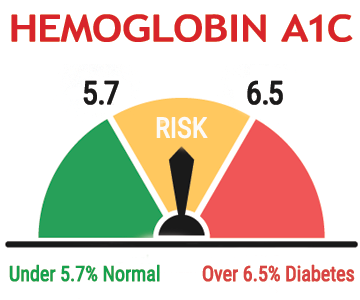My Health-Span Notes
Testing options https://www.ultalabtests.com/
Coronary calcium scoring, also known as heart scanning, is one of the tests that can be performed during a CT Scan.
$150 at https://www.centralvalleymedicalcenter.com/specialties-services/diagnostic-imaging/coronary-calcium-scoring/
Central Valley Medical Center, call our imaging department at 435-623-3165.
Lorem ipsum dolor sit amet, consectetur adipiscing elit. Ut elit tellus, luctus nec ullamcorper mattis, pulvinar dapibus leo.
CrCl - creatinine clearance (CrCl) to assess kidney function.
There are several methods to estimate CrCl, but the most commonly used equation is the Cockcroft-Gault equation. Here’s the formula:
CrCl = [(140 – age) × weight (kg)] / (72 × serum creatinine (mg/dL))
If you’re a female, multiply the result by 0.85.
To use this equation, you’ll need the following information:
- Your age
- Your weight in kilograms
- Your serum creatinine level from your blood work (in mg/dL)
Keep in mind that this equation has its limitations and may not be as accurate in certain populations, such as those with extreme body weights or muscle mass. Your healthcare provider will be able to provide a more accurate assessment of your kidney function using more comprehensive tests and equations.
Monocyte % Auto
The monocyte percentage (monocyte %) in a blood test is part of a complete blood count (CBC) with differential. Monocytes are a type of white blood cell (leukocyte) that play an essential role in the immune system, particularly in fighting infections and aiding in the removal of dead or damaged cells. The monocyte percentage is the proportion of monocytes relative to the total number of white blood cells in your blood sample.
A typical reference range for the monocyte percentage in adults is around 2-10%. However, this range can vary slightly depending on the laboratory and their specific reference values.
An increased monocyte percentage may be seen in conditions such as:
- Chronic infections
- Autoimmune disorders (e.g., systemic lupus erythematosus, rheumatoid arthritis)
- Inflammatory conditions (e.g., inflammatory bowel disease)
- Some types of leukemia or lymphoma
A decreased monocyte percentage may be seen in conditions such as:
- Severe infections (e.g., sepsis)
- Bone marrow suppression due to chemotherapy, radiation therapy, or certain medications
- Some types of leukemia or lymphoma
It is important to note that the monocyte percentage should be interpreted within the context of the entire CBC and differential, as well as the patient’s clinical history and overall health. If you have concerns about your monocyte percentage or any other aspect of your blood work, consult with your healthcare provider for a more personalized interpretation of the results.
Basophil absolute count (Baso ABS or Baso #)
Basophil absolute count (Baso ABS or Baso #) is a part of a complete blood count (CBC) with differential, which measures the actual number of basophils in a blood sample. Basophils are a type of white blood cell (leukocyte) and play a role in the immune system, particularly in allergic reactions and inflammatory processes.
The Baso ABS is usually reported in cells per microliter (cells/µL) or cells per liter (cells/L). The typical reference range for basophil absolute count in adults is around 0 – 200 cells/µL or 0 – 0.2 x 10^9 cells/L, although this can vary slightly depending on the laboratory and their specific reference values.
An increased basophil count (basophilia) can be seen in certain conditions, such as:
- Allergic reactions
- Inflammatory conditions (e.g., inflammatory bowel disease, rheumatoid arthritis)
- Infections (e.g., chickenpox, smallpox)
- Some types of leukemia or other blood disorders
A decreased basophil count (basopenia) can be seen in conditions such as:
- Acute infections or severe stress
- Hyperthyroidism
- Long-term use of corticosteroids
As with other components of the CBC and differential, it’s important to interpret the basophil absolute count within the context of the entire blood work and the patient’s clinical history and overall health. If you have concerns about your basophil count or any other aspect of your blood work, consult with your healthcare provider for a more personalized interpretation of the results.

A1c also known as glycated hemoglobin or HbA1c
A1c, also known as glycated hemoglobin or HbA1c, is a blood test that reflects your average blood sugar levels over the past 2-3 months. It measures the percentage of hemoglobin (a protein in red blood cells that carries oxygen) that has glucose attached to it. A1c is an essential test for people with diabetes, as it helps monitor how well blood sugar is being controlled over time.
The American Diabetes Association (ADA) provides the following general guidelines for A1c levels:
- Normal: Less than 5.7%
- Prediabetes: 5.7% to 6.4%
- Diabetes: 6.5% or higher
For people already diagnosed with diabetes, the ADA recommends an individualized A1c target, usually below 7% for many adults. This target can vary depending on factors such as age, duration of diabetes, presence of complications, and individual risk of hypoglycemia. Your healthcare provider will work with you to determine the appropriate A1c target based on your specific needs and health status.
It’s essential to keep in mind that the A1c test is not a substitute for daily blood glucose monitoring. People with diabetes should still regularly check their blood sugar levels and adjust their treatment plan accordingly. If you have concerns about your A1c or blood sugar management, consult with your healthcare provider for personalized guidance.